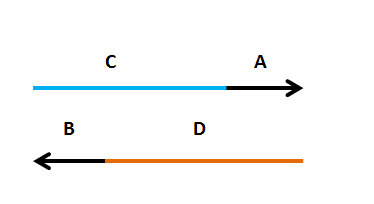Megaprimer whole plasmid cloning
aka MEGAWHOP cloningaka Overlap Extension PCR cloning Steve Sowa 4/25/2012 Adapted from Bryksin AV, Matsumura I. 2010. Overlap extension PCR Cloning: a simple and reliable way to create recombinant plasmids. Biotechniques.48(6):463-5.
Purpose
To insert a DNA sequence into a plasmid without restriction enzymes.Experimental Steps
- Create primers that amplify region of interest and hybridize with target plasmid
- Perform a Phusion PCR with primers using the region of interest as template
- Perform a second Phusion PCR using the products of the first PCR and the target plasmid as template
- Digest Second PCR with Dpn1 to remove parental plasmid
- Transform in E coli

Designing Primers
 Primers need to have two components
Primers need to have two components - a region that amplifies the insert (A(or B), 20-25nt)
- a region that targets the new plasmid (C(or D), 30-40nt)
PCR Insert
Use stardard 25ul Phusion (or other high fidelity polymerase) protocol- PCR 1(25ul reaction)
- 5 ul 5x Buffer
- 1.5 ul dntps
- 1.25 ul primer (A+C)
- 1.25 ul primer (B+D)
- x ul template plasmid (<250ng)
- ddH20 to 24.5 ul
- then add 0.5 ul Phusion
PCR Recombinant Plasmid
Use modified 10ul Phusion (or other high fidelity polymerase) protocol- 2 ul 5x Buffer
- 1 ul dntps
- 500 ng PCR insert product
- ~10 ng target plasmid
- ddH20 to 9.5 ul
- then add 0.5 ul Phusion
Digest
Digest Recombinant Plasmid PCR product with 0.5 ul Dpn1 at 37°C for one and a half hours to remove parental DNATransform
Electroporate the new plasmid into E coli -- SteveSowa - 25 Apr 2012Topic revision: r2 - 2012-04-26 - JeffreyBarrick
Ideas, requests, problems regarding TWiki? Send feedback